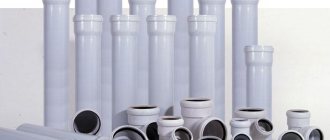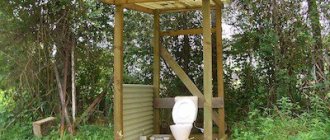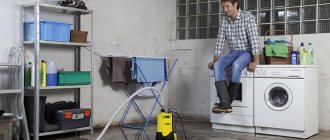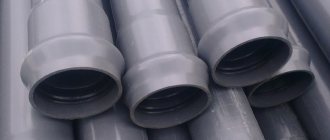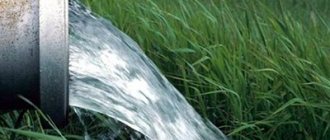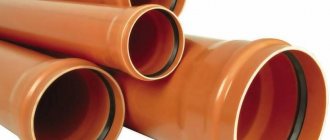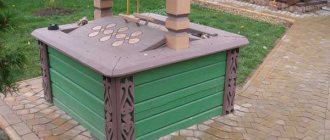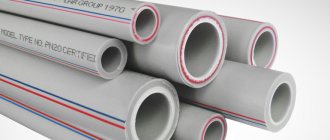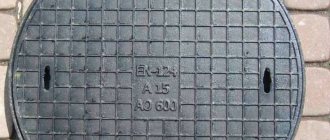Storm drainage, or as they are also called, drainage nets are widely used when arranging drainage on a site. Storm grates protect the drainage system from clogging, which is especially important during the spring snow melt, when a lot of contaminants enter the storm water drain along with the water. Also, soil fractions, fallen leaves, and small branches can enter the system with precipitation. All this can lead to blockages.
Storm drain grates
Storm drainage, also commonly known as storm drainage, is considered the most important external drainage system. Storm sewers are constructed from local linear storm water inlets (point drains, pipes, drainage tanks), intended for collecting and discharging water to intentionally provided areas (sewage wells, pipelines). To protect the components of the drainage structure from clogging, storm nets or storm grates are used.
Why do you need a drainage system?
The main function of protecting a house from precipitation is performed by the roof. The overhangs of the slopes extending beyond the line of the facades divert water coming from the roof to a certain distance from the building. But even with very wide overhangs, the water draining from the roof ends up too close to the outer walls and if it is not removed using a drainage system, it will wash away the foundation and base of the building.
The walls of the house can also be damaged by water flows passing through the site and passing along the building. This phenomenon is typical for areas with a slope. With the help of storm ditches, water flows are redirected to the sewer system or off site. Drainage is also needed to protect the surface of paths and areas on the site. For example, if water stagnates on a recreation area lined with a terrace board, the coating will very quickly fail.
Storm grate along the lawn Source zen.yandex.ru
Storm gratings for gutters and channels
Storm gratings can be installed on independently prepared trays. In this case, it is necessary to accurately determine the width of the drainage channel and the method of fixing the grate.
A ready-made solution - storm drains with gratings . Such trays are called drainage trays and are made of plastic, concrete or polymer concrete. The systems are equipped with spillways, are installed linearly, and can create cascades and slopes.
Plastic trays / Concrete trays / Polymer concrete trays
Storm gratings for trays have seats for fasteners (attaching the grate to the tray). The fastening can be located in the center (in case of fastening with plastic or steel fasteners) or along the perimeter of the grille (bolt fastening). Some types of steel gratings do not require additional equipment with fasteners - new developments have been successfully implemented for the 3rd year. The fastening prevents the grid from moving during operation, as well as from unauthorized penetration into the channel.
Types of drainage system
The drainage system can be open or closed. The second option is more complex, but also more convenient. Storm ditches protected by gratings are not dangerous like open trenches, but they fit better into the landscape design of the site and allow you to freely design the local area.
Closed drainage can be point or linear. When arranging point drainage, wells are installed in places where water accumulates on the site. The underground drainage structure is quite complex and includes a whole set of elements, such as a sand cushion, a concrete layer, drainage trays, sewer pipes and other components. From above, this entire structure is covered with a drainage grid.
An example of arranging point drainage for a site Source pinterest.com
When creating a linear drainage system, a trench with trays is pulled along the line of water accumulation. The underground part of the structure is similar to the point part, but has a slight recess. All trenches (gutters) laid on the site discharge water into a storm sewer or into a general drainage well. The entire length of the gutters is covered with gratings.
Advantages of water intake grates
The rationality of installing storm water drainage systems in the Moscow climate should not cause fluctuations: on average, in 1 year, up to 100 cubic meters of water flows through the storm drain from the roof of a standard house alone. If this entire volume of water begins to flow freely from the roof onto the soil, which threatens not only puddles and significant dampness, but also early collapse of the foundation of the house. A properly designed storm water drainage system solves a number of problems:
- reduces the possibility of puddle formation to a minimum;
- protects buildings and construction installations from the influence of humidity;
- prevents waterlogging and soil damage;
- prevents flooding of lower floors and basements.
Installing a storm drain will require performing the required experimental work and forming a well-designed plan, taking into account the level of precipitation and the properties of a certain area. Experts from the company “DACHNIY UYUT PLUS” have the opportunity to optimize the costs of its construction.
Selecting a drainage grid
The entire drainage system must be properly designed and efficiently equipped. All elements are important in it, without exception. However, the only visible part of it is a set of gratings that cover gutters and wells. This means that the grille must not only be reliable and durable, but also quite aesthetically pleasing. Although drainage trenches are usually laid along paths, the grates will often be stepped on, and therefore they must be durable and non-slippery.
Anti-slip grille Source 4geo.ru
A well-chosen grid provides the drainage structure with the required rate of wastewater intake, and at the same time it should not allow large debris into the system that could clog the pipes. There are gratings on sale in different parameters, from different materials and from different manufacturers.
Application of water intake grates
When making a choice to benefit from a particular product, you should take into account the expected overloads. Thus, cast iron drainage mesh is recommended for installation in places where vehicles move. Where the loads on the track are greatest, it is more correct to use a similar device, such as a slotted cast iron water intake mesh. Its structure has the greatest strength, as a result of which it can withstand the influence of freight vehicles.
The track surface experiences significantly less load in places where motorcycles and bicycles travel. For such areas, a zinc-coated steel water intake mesh is perfect. In municipal parks and areas with pedestrian traffic, a mesh made of copper or stamped steel is installed. They have a graceful appearance, which is often considered essential for pedestrian entertainment venues.
A plastic water intake mesh with a low overload class is recommended for installation on a personal plot. It contains an easily accessible price, stands out for its simple installation and advanced design. All varieties of the product meet strict quality standards and are resistant to corrosion and aggressive chemicals. substances. The cost of water intake for a grid depends on the substance used to form it, the dimensions and the class of withstand overload.
Load classification
When choosing a grating option for arranging a site, you need to take into account their cost, durability and external characteristics. But the most important thing is to correctly determine the strength of products.
Based on load, products are divided into 6 classes - A, B, C, D, E, and F. The stronger the grating, the more expensive it is. Naturally, there is no point in installing structures designed for industrial zones or, for example, parking lots, on the territory of a private household. Class A gratings can withstand minimal loads. They are ideal for landscaping the pedestrian part of the yard. Where vehicles will enter, it is better to install class B products.
Classification of gratings for rain showers Source truba68.ru
Material
Grilles can be made from:
- cast iron;
- become;
- copper;
- plastic.
Each of these materials has its own advantages and disadvantages.
Cast iron
Cast iron is the classic material for storm grates. Not so long ago it was the main material for the design of urban drainage systems. Cast iron protective elements differ in material quality, size and shape. Their main advantage is that they are able to withstand very heavy loads. If trucks or construction equipment often enter the site, cast iron protection for storm gutters will be most suitable.
Cast iron has other advantages. It is resistant to corrosion and sudden temperature changes, and is not susceptible to prolonged frosts. But it also has its drawback - it is heavy. In addition, cast iron drainage grates for gutters do not always look attractive, which is due to the technology of casting cast iron products.
Cast iron grates are usually made of rectangular shape. Square protective elements are produced less frequently. The holes have a standard width, allowing the products to effectively pass wastewater flows.
Cast iron grate for rainwater inlet Source stroy-podskazka.ru
Different types of cast iron are used in the production of gratings. The products themselves are divided into several classes according to the degree of strength. For private households, it is recommended to use products of minimum strength class A15, capable of withstanding loads of up to 1.5 tons. However, if necessary, you can install B125 class gratings that can withstand 12.5 tons. More durable versions of cast iron products are intended for industrial areas.
TYPES of gratings
PLASTIC
Plastic grilles before installation
Plastic storm net, stamped steel mesh coated with zinc, copper water intake mesh, and also stamped stainless steel, all of them have load category A - up to 1.5 tons and are suitable for areas in the country, paths in the garden.
STEEL
Cellular steel mesh coated with zinc has category B - up to 12.5 tons. It is used for car garages, parking lots in summer cottages, entry areas, etc.
CAST IRON GRATES AND MESHES
Cast iron storm drainage grids have an overload category from C to F.
Cast iron mesh, slotted and cellular, can be coated with zinc, which prevents them from being exposed to corrosion and prevents the formation of rust.
The cast-iron rainwater mesh can be painted in any tone with metal paint, which, undoubtedly, is considered its advantage regarding the design and improvement of the area.
Cast iron drainage mesh is attached to plastic drainage tanks with a plastic fastener, and to polymer concrete and concrete water intake tanks with a metal fastener. The drainage mesh may not be attached to the containers, depending on the location of the storm drain. Fastenings for storm nets are also considered an anti-vandal criterion.
Installation of cast iron gratings
- Choose the optimal storm water inlet
- Clean the surface of the bell
- The storm inlet with well comes complete with an adapter that connects the main line to the well.
- The rainwater inlet is installed in the pit, only the frame and grate should remain on top
- Fill hollow areas with a dry mixture of sand and concrete. Compact
Do not forget about the angle of inclination during installation; it is necessary to create gravity flow and must be at least 3 degrees.
